
The Power Play: Leveraging Social Media for Lawyers
Master social media for lawyers! Boost your law firm’s credibility and reach with expert strategies and trends.

Learn from Us
Welcome to our Small Business Blog, where we share insights, tips, and strategies to help your business thrive in today’s competitive market. Our articles are designed to provide actionable advice that you can implement right away, whether you’re looking to improve your digital marketing, optimize your web design, or boost your online presence.
At Green Thoughts, we’re passionate about helping small businesses succeed, and we’re here to support you every step of the way. Ready to take your business to the next level?
Want to start blogging for your busienss yourself? You can learn more here.

Master social media for lawyers! Boost your law firm’s credibility and reach with expert strategies and trends.

Discover expert digital marketing for law firms to boost outreach, brand credibility, and client engagement.

Unlock lead generation for lawyers with top strategies from SEO to social media to boost your practice’s growth!

Unlock the power of SEO for law firm websites! Maximize visibility and attract clients with expert strategies.

Discover content marketing for law firms! Maximize results with targeted strategies and legal-specific SEO.

Unlock the secrets of successful law firm email campaigns with expert tips on content, SEO, and personalized communication.

Master email marketing for attorneys! Learn strategies to attract clients, build trust, and boost your legal practice.

Master legal email marketing best practices! Ensure compliance and avoid penalties with our expert guide for law firms.

Discover email automation for legal services to boost client reach and streamline workflows effectively!

Discover top email marketing strategies for lawyers to optimize campaigns, grow your list, and nurture client relationships.

Boost your practice with email outreach for legal practices. Learn strategies, compliance, and ROI insights.

Discover how to craft effective email newsletters for law firms to nurture client relationships and boost engagement.

Discover advanced strategies for targeted email marketing for attorneys. Boost engagement and grow your legal practice.

Discover proven attorney email marketing tips to grow your practice with effective, compliant strategies.

Discover effective strategies for law firm email advertising to maximize your reach and grow your practice!

Skyrocket your firm’s presence with local SEO strategies for law firms. Boost rankings, build authority, and grow locally!

Strengthen your practice with a law firm SEO agency. Discover key strategies to boost visibility and credibility.

Unlock seo tips for law firms! Boost online presence and dominate search results with expert strategies.

Unlock the secrets of on-page SEO for law firms to boost your visibility and rank higher in local search results.

Discover effective SEO strategies for law firms to boost online presence and attract clients in the digital space.

Unlock law firm SEO services essentials! Enhance your firm’s visibility with strategic keywords and local optimization.

Unlock law firm SEO best practices. Boost local rankings and master keyword strategies to maximize your impact.

Boost your law firm website SEO with strategies on link building, local SEO, and content optimization for maximum impact.

Unlock your law firm’s potential with a law firm SEO specialist. Boost visibility and attract clients today!

Discover top SEO keywords for law firms to boost your rankings and attract more clients. Optimize your strategy today!

Boost your practice with strategic social media management for lawyers. Enhance visibility and track performance.

Discover top social media marketing strategies for attorneys to boost online presence and generate leads effectively.

Unlock growth with proven social media campaigns for legal professionals. Master compliance and engagement strategies.

Master law firm social media marketing essentials. Boost your online presence and engage clients effectively!

Master social media advertising for lawyers! Boost your firm’s online presence with targeted strategies and metrics analysis.
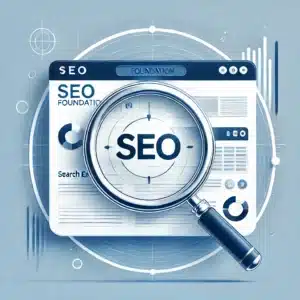
Understand the Foundation of SEO What is SEO?Search Engine Optimization (SEO) is the practice of improving a website’s visibility on search engines like Google. It’s
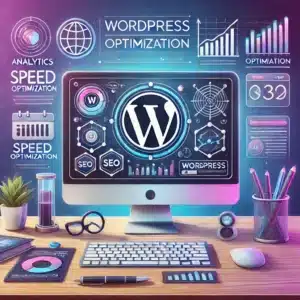
The Small Business Guide to SEO Success Struggling to attract local customers online? You’re not alone. In today’s digital-first world, small businesses often face an

Create a Digital Hub for Your Business Your website isn’t just a placeholder for your business online; it’s the cornerstone of your digital strategy. Whether
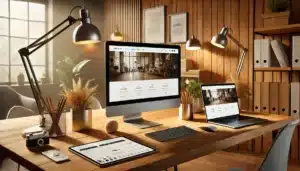
A website isn’t just an online presence—it’s one of your most powerful tools for driving business success. Whether you’re looking to generate leads, increase sales,

For many businesses, a website is little more than a digital business card—static, straightforward, and primarily informational. While this approach might have been sufficient in

Master your online presence with our guide to SEO website audits – elevate your business today!

Boost your business with key SEO strategies – learn the essentials of SEO for small businesses today!

Master SEO basics to boost your site’s visibility and unlock digital success with our expert guide.

Master on-page SEO with our essential guide and boost your site’s visibility and ranking.

Master SEO for bloggers with our guide on boosting your blog’s visibility and driving success!

Master SEO for beginners and build a strong online presence for your business with our easy guide!

Master SEO for social media to boost your business visibility and engagement online.

Elevate your brand’s reach with off-page SEO tactics that boost visibility and credibility online!

Elevate your brand with SEO best practices that boost visibility and drive traffic. Start optimizing now!

Master SEO keyword research with our guide and elevate your business’s online presence to new heights!

Discover my marketing plan outline and turn your ideas into action. Perfect for small business owners!

Discover my proven marketing plan template for entrepreneurs. Streamline your strategy and achieve success!

Unlock success with my guide to marketing strategy development. Insights, goals, and metrics for small business owners!

Discover my effective marketing plan for small business growth. Learn key strategies, goals, and how to adapt!

Discover actionable marketing plan examples to boost your small business success. Get results-driven strategies now!

Boost your legal practice with top-notch lawyer website design tips for standout online credibility.

Rank Your Business with Local SEO In today’s digital landscape, businesses are constantly vying for that coveted top spot on Google’s search results. But how
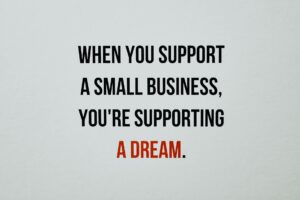
Boost your local appeal with top local SEO strategies for small businesses. Dominate the local scene!

Elevate your business with top local SEO tools for small businesses and own the local search scene!

Elevate your local visibility with top local SEO keywords for small businesses. Unlock the map pack now!

Unlock small business local search optimization secrets and dominate your market presence.
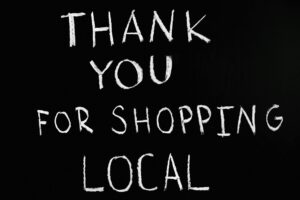
Master local visibility with our local SEO checklist for small businesses—boost your map pack ranking!

Navigate digital marketing for attorneys with our expert roadmap to online success for your legal practice.

Maximize your sales with savvy facebook ads budget tips for small businesses. Boost ROI now!

Boost your business with savvy Facebook advertising for small businesses. Unlock sales and leads!

Boost sales with our facebook ads strategy for small businesses—unlock ad success now!

Unlock sales with small business advertising on Facebook—your guide to effective, targeted ads!

Elevate your brand with effective Facebook ads for small business—boost sales and leads today!

SEO Agency Dalton GA Boost your business’s online presence with our expert SEO services in Dalton, GA. At Green Thoughts Consulting, we specialize in helping

Elevate your firm with top accounting firm marketing ideas for digital presence and client engagement.

The Quiet After Opening Day You’ve done it. After all the hard work, investment, and planning, your business is finally open. You sit there, waiting

Boost profits with top email marketing software for small businesses—unlock growth now!

Boost your business with top email marketing templates designed for small businesses. Start engaging effectively!

Boost sales with our guide on email marketing campaigns for small business success.

Boost sales with top small business email marketing strategies. Elevate your game now!

Boost your business with insights on maximizing email marketing ROI for small businesses. Learn key strategies!

Boost your brand with savvy email marketing for small businesses. Unlock the secrets to audience engagement!

Streamline success with email marketing automation for small businesses—your guide to engaging customers efficiently!

Find the best email marketing platforms for small businesses to boost your market presence!

Boost your business with top email marketing tips for small businesses. Get noticed in any inbox!

Boost your solo biz with savvy email marketing for solopreneurs. Elevate engagement and ROI!

Elevate your firm with cutting-edge law firm marketing strategies and measure success like a pro!

Maximize case leads with expert PPC advertising for lawyers—unlock the secret to law firm growth.

Boost your firm’s visibility with key local SEO for lawyers strategies—rank higher, land more clients.

Elevate your practice with a law firm marketing agency – expert SEO, content, and client acquisition strategies await!

Boost your firm’s presence with effective lawyer blogging. Engage clients, showcase expertise, and grow!

Elevate your firm with key online marketing for lawyers tips—SEO, social media, and more!

Dominate your legal niche with cutting-edge lawyer SEO tactics. Boost your firm’s online presence now!

Elevate your legal practice with ethical, cutting-edge lawyer advertising strategies. Stay ahead now!

Grow your green business with top landscaping advertising strategies—unlock the secret to online growth!

Boost your green business with top landscaping marketing services. Grow profits, track success!

Grow your brand with top landscaping marketing strategies. Get noticed, get hired!

Boost your green business with a landscaping marketing consultant. Grow visibility and leads!

Grow your reach with top landscaping SEO strategies for your business’s blooming online presence!

Boost your brand with a landscaping marketing agency – grow your reach and root your success!

Elevate your green business with a robust landscaping marketing plan that grows success.

Grow your brand with top-notch landscaping website design—turn clicks into customers!

Elevate your green space with standout landscaping branding strategies that resonate and engage.

Elevate your green business with top landscaping marketing ideas. Grow your brand’s digital roots today!

Discover Chattanooga entrepreneur meetups to boost your business connections and growth in a friendly atmosphere!

Discover exciting Chattanooga small business events! Join me and grow with NAHCC and ScaleUp Nashville.

Discover top networking events in Chattanooga, TN! Maximize connections with my insider tips for business owners.

Explore the Chattanooga Small Business Expo! Discover grants, resources, and top bookkeepers for your business success.

Discover the best small business seminars near me! Unlock growth strategies and networking opportunities now.
